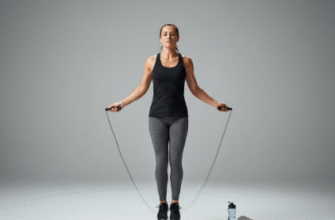Our homes are more than just bricks and mortar; they are our sanctuaries, the places where we should feel safest, most comfortable, and most ourselves. Yet, sometimes, subtle (and not-so-subtle) messages within our own four walls can chip away at our self-esteem, particularly when it comes to body image. Cultivating a body-positive home environment isn’t about achieving a certain look or pretending negative feelings don’t exist. Instead, it’s about intentionally shaping our surroundings to support self-acceptance, respect for our bodies, and a focus on well-being over appearance.
Clearing Out the Clutter: More Than Just Tidying Up
Think about the objects and messages currently occupying your space. Do they lift you up or subtly drag you down? Creating a body-positive haven often starts with a different kind of decluttering. This isn’t just about getting rid of junk mail; it’s about identifying and removing triggers that promote negative self-talk about your body.
Consider the bathroom scale. For many, this object dictates their mood for the day. Ask yourself honestly: does stepping on the scale serve a genuinely positive purpose in your life right now, or does it mostly cause anxiety and judgment? If it’s the latter, consider putting it away, perhaps in a closet or attic, or even getting rid of it entirely. Its absence can be surprisingly liberating, shifting focus from a number to how your body actually feels.
Look through your wardrobe. Are you holding onto clothes from years ago that no longer fit, hoping you’ll shrink back into them? These items can act as constant, silent reminders of perceived failure. Pack them away or donate them. Dress the body you have now with clothes that fit comfortably and make you feel good. Having a closet full of clothes that actually fit and you enjoy wearing is far more affirming than one filled with “goal” clothes that induce guilt.
What about magazines or books lying around? Are they filled with images promoting unrealistic beauty standards or articles focused on restrictive diets and body transformations? Consider unsubscribing or recycling them. Replace them with reading material that inspires, educates on diverse topics, or simply brings joy without the side helping of body critique.
Curating Your Visual Landscape
Once you’ve removed the negatives, it’s time to consciously introduce positives. Your home’s decor significantly influences your mood and thoughts. Make intentional choices about what you see every day.
Think about artwork. Does it celebrate diversity in shape, size, age, and ethnicity? Look for pieces that depict strength, joy, movement, or tranquility, rather than solely focusing on idealized human forms. Nature scenes, abstract art that evokes positive emotions, or pieces by diverse artists can all contribute to a more accepting atmosphere.
Photographs are powerful. Display photos of yourself and loved ones genuinely enjoying life – laughing, exploring, celebrating, resting. Focus on capturing moments of connection and happiness, rather than images chosen purely for how someone looks in them. Remind yourself of your body’s ability to experience joy and connection.
Even small objects matter. A beautifully shaped stone found on a walk, a comfortable cushion in a vibrant colour, a plant thriving under your care – these can all serve as gentle reminders of beauty, resilience, and growth in many forms.
Mirrors: Reflection Without Judgment
Mirrors are a functional necessity, but they can also become focal points for criticism. Consider their placement. Do you need a full-length mirror right by the front door where you give yourself a final, often critical, once-over? Maybe relocate it to a more private space like a bedroom or bathroom. Frame mirrors beautifully, perhaps adding positive affirmations nearby on sticky notes or decorative signs. The goal isn’t to avoid seeing yourself, but to shift the context from scrutiny to neutral observation or even appreciation.
Mindful Media Consumption at Home
What you watch and scroll through in the comfort of your home profoundly impacts your body image. Social media, television shows, and movies often perpetuate narrow beauty ideals. Take control of your media environment.
Curate your social media feeds ruthlessly. Unfollow accounts that make you feel inadequate, promote diet culture, or constantly showcase digitally altered bodies. Actively seek out and follow accounts that showcase body diversity, promote intuitive eating, share inspiring stories, or focus on hobbies and interests unrelated to appearance. Fill your feed with content that leaves you feeling informed, inspired, or amused, not less-than.
Be mindful of the background noise. Is the TV constantly on, playing shows or commercials laden with appearance-focused messages? Consider designated screen-free times or zones in your home. Choose movies and shows that feature diverse casts and storylines where characters are valued for more than their looks. Engage critically with the media you do consume, discussing unrealistic portrayals with family or friends if appropriate.
Verified Approach: Creating a supportive home involves actively choosing what surrounds you. This includes the physical objects, the images you display, and the media you consume within your personal space. Shifting these elements can gently nudge your focus towards acceptance and well-being, fostering a more positive self-perception over time.
The Power of Language Within Your Walls
The way we talk about bodies – our own and others’ – shapes the atmosphere of our home. Strive to make your home a “no body-shame zone.”
Pay attention to your own self-talk, especially comments made aloud. Avoid negative comments about your weight, shape, or perceived flaws. Try reframing: instead of “I hate my thighs,” perhaps focus on “My legs allow me to walk and explore.” It feels awkward at first, but consciously shifting your language can rewire thought patterns.
Discourage diet talk and negative body commentary from others within your home. You don’t need to be confrontational. You can gently redirect conversations. If someone comments on weight loss (theirs or someone else’s), you could say, “I’m trying to focus less on appearance and more on how people feel” or change the subject entirely. Set boundaries around what topics are acceptable in your shared space.
Compliment people on qualities other than appearance. Praise their kindness, intelligence, creativity, humour, or effort. When discussing your own experiences, focus on feelings, accomplishments, and sensations rather than solely on how you looked.
Designing for Comfort and Joyful Movement
A body-positive home should feel physically comfortable and inviting for the body inhabiting it. This means prioritising function and ease over purely aesthetic considerations that might be uncomfortable.
Choose furniture you can relax in. Are your chairs and sofas comfortable for sitting, lounging, and resting? Is your bed conducive to restful sleep? Don’t keep stylish but uncomfortable furniture just for show if it detracts from your ability to truly relax at home.
Make space for activities you enjoy that involve your body. Do you like yoga, dancing, stretching, or playing games? Ensure you have a comfortable, accessible space for these activities. This reinforces the idea that your body is for experiencing joy and movement, not just for looking a certain way.
Organise your home for ease of use. Can you easily reach things you need? Is your clothing accessible and organised in a way that makes getting dressed a pleasant, rather than stressful, experience? A functional space reduces daily frustrations that can sometimes spill over into body dissatisfaction.
Nourishment and Eating: Creating a Peaceful Zone
The kitchen and dining areas are central to our relationship with food and, by extension, our bodies. Aim to create an environment that supports a peaceful, intuitive relationship with eating.
Make your eating space pleasant. Set the table, even if you’re eating alone. Put away distractions like phones or laptops during meals when possible. This encourages mindful eating, helping you savour flavours and recognise fullness cues.
Avoid labelling foods as “good” or “bad.” Stock your kitchen with a variety of foods you enjoy and that nourish you, focusing on balance and pleasure rather than restriction. Banish diet-related paraphernalia – calorie counting charts, lists of forbidden foods, etc.
Focus family conversations around the table on connection and sharing about your day, rather than on calorie counts, body size, or restrictive eating plans. Model enjoying a variety of foods without guilt or commentary.
Living Together: Shared Spaces, Shared Values
If you share your home with family or roommates, creating a body-positive environment becomes a collaborative effort. Open communication is key.
Talk about why creating this kind of environment is important to you. Explain your desire to move away from critical language or appearance-based judgments. You might share specific examples, like wanting to avoid diet talk at dinner or agreeing not to comment on each other’s bodies.
Lead by example. Consistently use respectful language, avoid self-criticism aloud, and curate your personal spaces positively. Your actions can influence the overall atmosphere.
Respect boundaries. While you can express your preferences, you can’t control others’ thoughts or actions completely. Focus on creating agreements for shared spaces and maintaining positivity in your own interactions.
Building a body-positive home is not a one-time task but an ongoing practice of mindful curation and intentional choices. It’s about replacing judgment with kindness, comparison with appreciation, and external validation with internal acceptance. By consciously shaping your surroundings, you create a powerful buffer against societal pressures and build a true haven where you can rest, recharge, and respect the body you call home.








